-
 Bitcoin
Bitcoin $88,555.6766
1.18% -
 Ethereum
Ethereum $1,626.4043
-1.22% -
 Tether USDt
Tether USDt $0.9998
-0.01% -
 XRP
XRP $2.1018
-1.27% -
 BNB
BNB $605.8750
0.04% -
 Solana
Solana $140.3422
0.04% -
 USDC
USDC $0.9999
0.00% -
 Dogecoin
Dogecoin $0.1643
1.27% -
 TRON
TRON $0.2481
1.05% -
 Cardano
Cardano $0.6359
-1.63% -
 Chainlink
Chainlink $13.3216
-2.53% -
 UNUS SED LEO
UNUS SED LEO $9.1797
-2.79% -
 Avalanche
Avalanche $20.3681
-2.52% -
 Stellar
Stellar $0.2473
-4.43% -
 Sui
Sui $2.3043
2.50% -
 Shiba Inu
Shiba Inu $0.0...01257
-1.15% -
 Toncoin
Toncoin $2.9429
-3.48% -
 Hedera
Hedera $0.1738
0.16% -
 Bitcoin Cash
Bitcoin Cash $347.0587
1.49% -
 Hyperliquid
Hyperliquid $18.2576
-0.35% -
 Litecoin
Litecoin $79.8456
-0.89% -
 Polkadot
Polkadot $3.7809
-4.73% -
 Dai
Dai $0.9999
-0.01% -
 Bitget Token
Bitget Token $4.4439
-0.50% -
 Ethena USDe
Ethena USDe $0.9991
-0.01% -
 Pi
Pi $0.6313
-0.96% -
 Monero
Monero $216.2035
0.57% -
 Pepe
Pepe $0.0...08138
3.46% -
 Uniswap
Uniswap $5.3889
-1.68% -
 OKB
OKB $50.9281
-0.23%
What is the handling fee for Ethereum spot trading?
Ethereum spot trading incurs dynamic gas fees, not fixed handling fees, determined by network congestion and composed of gas price (Gwei) and gas limit; managing these fees requires using estimation tools and considering Layer-2 solutions.
Feb 27, 2025 at 08:24 pm
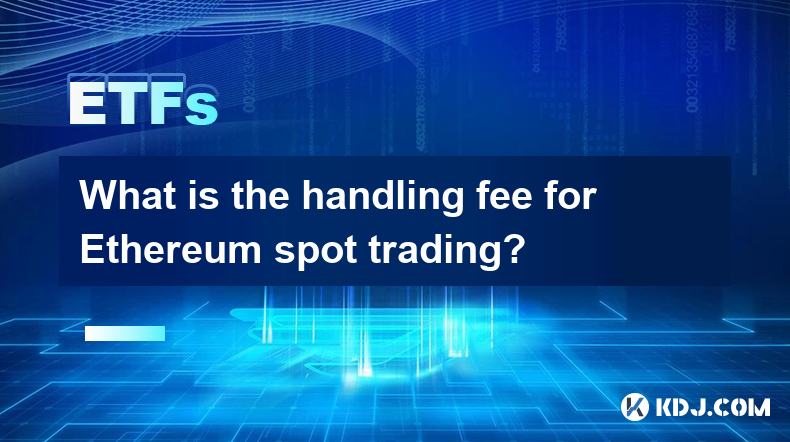
What is the Handling Fee for Ethereum Spot Trading? A Deep Dive into Ethereum Transaction Costs
Key Points:
- Gas Fees are Paramount: Ethereum's spot trading doesn't have a fixed handling fee like a traditional brokerage. Instead, transaction costs are determined by "gas fees," a dynamic mechanism reflecting network congestion. These fees are paid in ETH and are crucial to understanding the true cost of any Ethereum trade.
- Gas Fee Components: Gas fees are composed of two parts: gas price (Gwei) and gas limit. The gas price dictates how much you're willing to pay per unit of computational work, while the gas limit sets an upper bound on the amount of gas a transaction might consume. Understanding both is essential to optimizing costs.
- Factors Influencing Gas Fees: Network activity is the primary driver of gas prices. High network congestion, driven by factors like DeFi activity, NFT minting, or large-scale token deployments, leads to significantly higher gas fees. Conversely, periods of low network activity result in lower gas fees.
- Estimating and Managing Gas Fees: Several tools and strategies can help estimate and manage gas fees. These include using gas fee estimation tools integrated into wallets and exchanges, selecting appropriate gas prices based on network conditions, and utilizing off-chain scaling solutions like Layer-2 networks to reduce on-chain transaction costs.
- Variations Across Exchanges and Wallets: While the underlying gas fee mechanism is the same, the user experience and the way gas fees are presented can vary between different exchanges and wallets. Some platforms offer features like "gas optimization" or "priority fees" to expedite transactions.
Step 1: Understanding Ethereum's Gas Fee Mechanism
Ethereum operates on a decentralized, permissionless network. Unlike traditional centralized exchanges with pre-defined trading fees, Ethereum transactions are processed by miners who compete to include them in blocks. To incentivize miners to prioritize your transaction, you pay a fee, known as the gas fee. This fee isn't a fixed percentage of the trade value but rather a cost tied to the computational resources required to execute the transaction. The more complex the transaction, the more gas it consumes. A simple spot trade of ETH might consume a relatively small amount of gas, while a complex transaction involving multiple smart contracts could consume significantly more. This gas is measured in units called "gas units," and the price per gas unit is expressed in Gwei (1 Gwei = 0.000000001 ETH). The total gas fee is calculated by multiplying the gas used by the gas price.
The gas price is a crucial factor in determining the cost. A higher gas price increases the likelihood of your transaction being included in the next block, but it also increases the cost. A lower gas price might result in your transaction taking longer to process or even failing to be included if the network is congested. The gas limit, on the other hand, is a safeguard that prevents unexpected high costs. It represents the maximum amount of gas you're willing to spend on a transaction. If the transaction requires less gas than the limit, you only pay for the gas consumed. However, if the transaction exceeds the gas limit, it will fail, and you'll lose the gas already spent. Therefore, accurately estimating both the gas limit and the gas price is critical for successful and cost-effective Ethereum trading. Choosing a suitable gas limit requires understanding the complexity of the transaction, which can be challenging for inexperienced users. Many wallets and exchanges provide gas limit estimations, but it's always advisable to review and potentially adjust these estimations based on your risk tolerance and urgency. Incorrect estimation can lead to either unnecessarily high costs or transaction failures.
Step 2: Factors Affecting Ethereum Gas Fees
The most significant factor influencing Ethereum gas fees is network congestion. When many users are simultaneously performing transactions, the demand for block space increases, leading to higher gas prices in a competitive bidding process. This is similar to an auction, where miners choose the transactions with the highest gas prices to maximize their profits. Several events can cause spikes in network activity and, consequently, gas fees:
- DeFi Activity: The burgeoning Decentralized Finance (DeFi) ecosystem on Ethereum often sees significant spikes in activity, particularly during periods of high market volatility or the launch of new DeFi protocols. These activities, including lending, borrowing, and yield farming, all require Ethereum transactions, driving up gas demand.
- NFT Minting and Trading: The Non-Fungible Token (NFT) craze has also contributed to significant gas fee fluctuations. Minting new NFTs and trading them on marketplaces like OpenSea involves numerous Ethereum transactions, contributing to network congestion.
- Major Protocol Upgrades or Launches: Large-scale upgrades or the launch of significant new protocols on the Ethereum network often lead to surges in transaction volume, pushing gas fees higher. This is because many users simultaneously interact with the updated or new protocol.
- Market Volatility: Periods of high market volatility, such as significant price swings in cryptocurrencies, often lead to increased trading activity, which translates to higher gas fees. Traders' urgency to execute trades during volatile periods contributes to this effect.
- Time of Day: Gas fees can also exhibit daily patterns, often being higher during peak hours when more users are active.
Step 3: Estimating and Managing Ethereum Gas Fees
Several strategies can help you estimate and manage Ethereum gas fees effectively:
- Utilize Gas Fee Estimation Tools: Most reputable Ethereum wallets and exchanges provide tools that estimate gas fees based on current network conditions. These tools often offer different gas price options, such as "slow," "average," and "fast," indicating the expected transaction confirmation time for each option. Understanding these options is crucial for balancing cost and speed.
- Monitor Gas Price Trends: Keeping track of gas price trends is vital for optimizing costs. You can use various websites and tools that track real-time gas prices to gauge the current network congestion. This allows you to schedule transactions during periods of lower gas prices or to adjust your gas price accordingly.
- Employ Gas Optimization Techniques: Some advanced users employ techniques to optimize gas usage, such as batching multiple transactions into a single transaction to reduce the overall gas cost. This requires a deeper understanding of smart contracts and transaction structuring.
- Consider Layer-2 Solutions: Layer-2 scaling solutions, such as Optimism, Arbitrum, and Polygon, offer significantly lower transaction fees compared to the Ethereum mainnet. These solutions process transactions off-chain before settling them on the mainnet, reducing congestion and associated costs. If your trading strategy allows, using Layer-2 networks can dramatically lower your gas expenses.
- Adjust Gas Prices Based on Urgency: If you need a transaction to be confirmed quickly, you'll need to set a higher gas price. Conversely, if you're less concerned about confirmation time, you can opt for a lower gas price and accept a longer waiting period.
Step 4: Variations in Gas Fee Presentation Across Exchanges and Wallets
While the underlying gas fee mechanism remains consistent across different Ethereum platforms, the user experience and the way gas fees are presented can vary significantly.
- Transparency and Clarity: Some platforms provide clear and transparent information about gas fees, including estimated costs and potential variations. Others might offer less detail, potentially leading to unexpected costs.
- Gas Optimization Features: Some platforms offer built-in gas optimization features that automatically adjust gas prices and limits to minimize costs while ensuring timely transaction confirmations. These features can be particularly helpful for users unfamiliar with gas fee management.
- Priority Fees: Some exchanges offer priority fees, which guarantee faster transaction confirmations by incentivizing miners to prioritize your transaction. However, these options typically come at a higher cost.
- Bundling and Aggregation: Some services bundle multiple transactions together, reducing overall gas costs by optimizing gas usage across multiple transactions.
FAQs:
Q: What is Gwei?
A: Gwei is a smaller unit of Ether (ETH). 1 Gwei is equal to 0.000000001 ETH. Gas fees are usually expressed in Gwei to avoid dealing with very small numbers.
Q: How can I predict Ethereum gas fees?
A: Predicting gas fees with absolute accuracy is impossible due to the dynamic nature of the network. However, you can use gas fee estimation tools, monitor real-time gas price trackers, and consider historical trends to make informed estimates.
Q: What happens if I set a gas limit too low?
A: If your gas limit is too low, your transaction will fail, and you'll lose the gas you've already paid.
Q: What happens if I set a gas limit too high?
A: If your gas limit is too high, you'll pay more than necessary, but the transaction will still succeed.
Q: Are there any ways to avoid paying gas fees entirely?
A: No, gas fees are fundamental to the operation of the Ethereum network. However, you can minimize them by using Layer-2 solutions or scheduling transactions during periods of low network congestion.
Q: Why do gas fees fluctuate so much?
A: Gas fees fluctuate due to changes in network demand. High demand (e.g., during periods of high DeFi activity or NFT trading) leads to higher gas prices, while low demand results in lower prices.
Q: Can I negotiate gas fees?
A: No, gas fees are determined by a decentralized market mechanism. You can only influence them by choosing a different gas price and managing your gas limit.
This detailed explanation provides a comprehensive understanding of Ethereum's gas fee mechanism in the context of spot trading. Further research into specific wallets, exchanges, and Layer-2 solutions will provide more granular details on their fee structures and user experiences.
Disclaimer:info@kdj.com
The information provided is not trading advice. kdj.com does not assume any responsibility for any investments made based on the information provided in this article. Cryptocurrencies are highly volatile and it is highly recommended that you invest with caution after thorough research!
If you believe that the content used on this website infringes your copyright, please contact us immediately (info@kdj.com) and we will delete it promptly.
- Bitget Exploited: Market-Maker Bot Glitch Triggers $100M Trading Frenzy, Turning $VOXEL into a Crypto Storm
- 2025-04-22 16:40:12
- MANTRA CEO John Patrick Mullin announces plans to burn 300 million OM tokens to stabilize market price after recent massive price crash.
- 2025-04-22 16:40:12
- What is Hyperlane? It is a framework for enabling interoperability among different blockchain networks
- 2025-04-22 16:35:12
- Mantra Burns 16.5% of Its Total Supply to Boost Staking Rewards
- 2025-04-22 16:35:12
- Why Is Polygon (POL) Price Up?
- 2025-04-22 16:30:13
- Can Cardano's Triangle Breakout Drive ADA Price Higher?
- 2025-04-22 16:30:13
Related knowledge
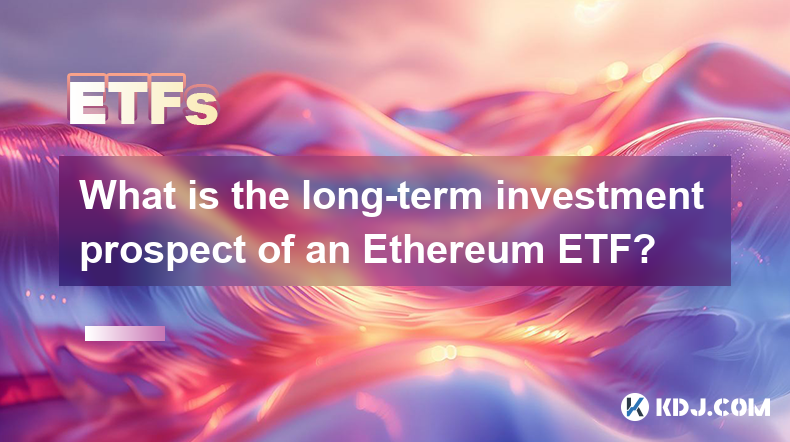
What is the long-term investment prospect of an Ethereum ETF?
Mar 18,2025 at 03:01pm
Key Points:Uncertainty surrounds the long-term prospects of an Ethereum ETF due to regulatory hurdles and market volatility.Approval hinges on regulatory clarity regarding cryptocurrencies, especially concerning investor protection and market manipulation.Successful ETF launches could boost Ethereum's price and adoption, but failure could negatively imp...
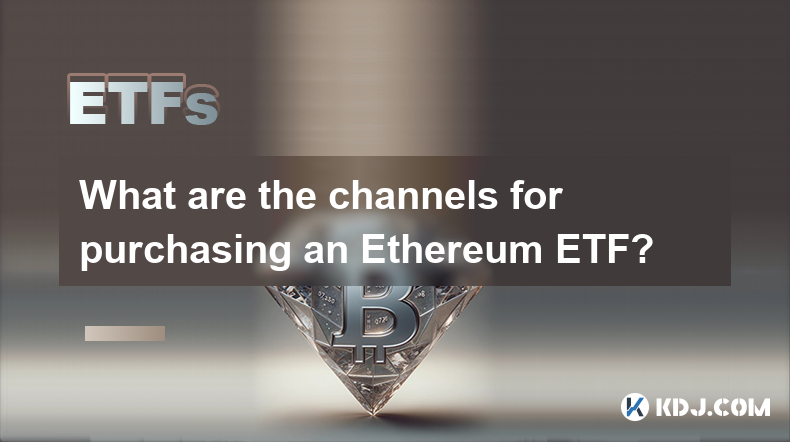
What are the channels for purchasing an Ethereum ETF?
Mar 18,2025 at 01:49am
Key Points:Currently, there are no Ethereum ETFs available for direct purchase by the general public in most major markets.Access to Ethereum exposure through ETFs is limited, mainly through futures-based ETFs.Purchasing Ethereum directly or through other investment vehicles remains a viable alternative.Regulatory hurdles and market complexities signifi...
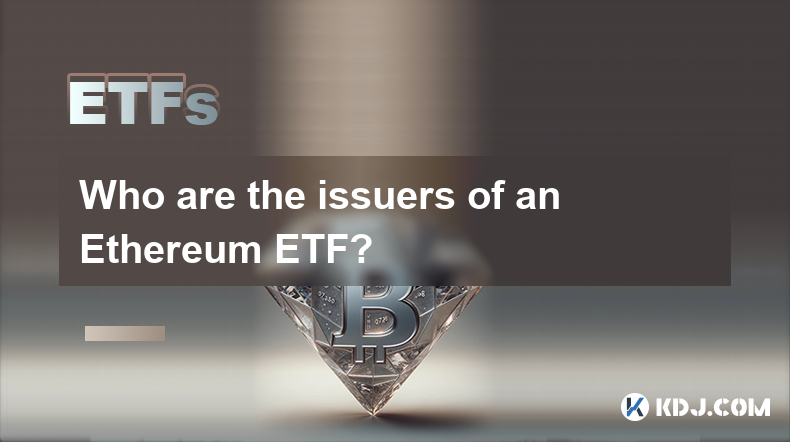
Who are the issuers of an Ethereum ETF?
Mar 19,2025 at 08:07pm
Key Points:There are no currently approved Ethereum ETFs in the US, meaning no single issuer can be definitively named. However, several firms have filed applications.The issuers of potential Ethereum ETFs will be large, established financial institutions, typically asset management companies.The specific requirements for ETF issuers are stringent and o...
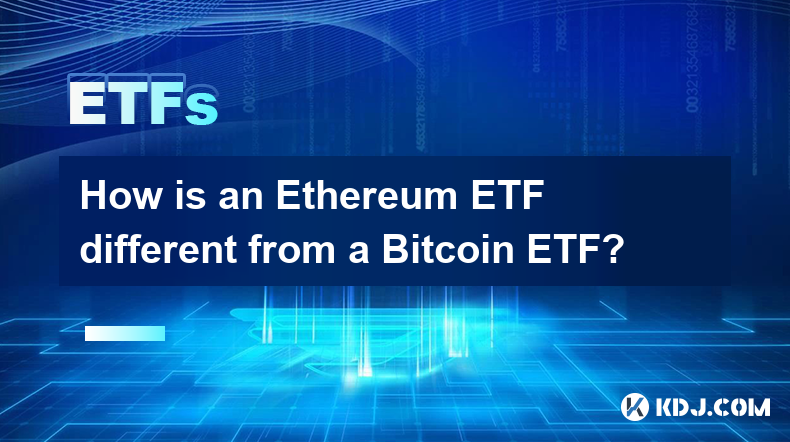
How is an Ethereum ETF different from a Bitcoin ETF?
Mar 17,2025 at 10:55am
Key Points:Underlying Asset: The core difference lies in the underlying asset: an Ethereum ETF tracks the price of Ether (ETH), while a Bitcoin ETF tracks the price of Bitcoin (BTC).Technology and Use Cases: Ethereum's blockchain supports smart contracts and decentralized applications (dApps), creating a distinct technological and investment narrative c...
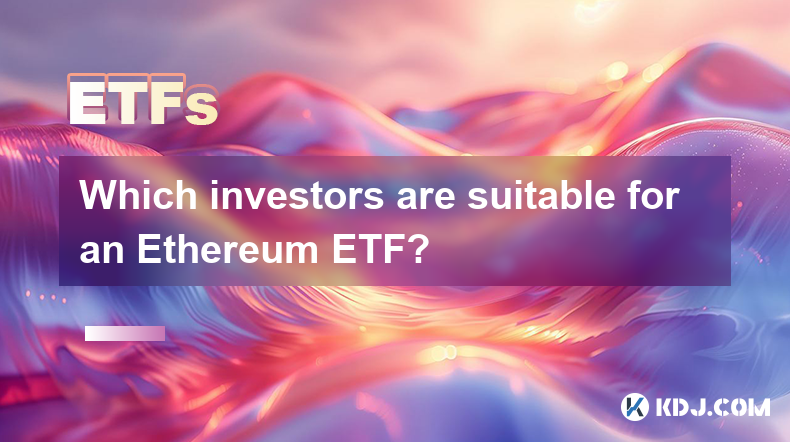
Which investors are suitable for an Ethereum ETF?
Mar 16,2025 at 05:50pm
Key Points:Risk Tolerance: Ethereum ETF investment requires a high risk tolerance due to the volatility of the cryptocurrency market.Investment Goals: Investors seeking long-term growth potential and exposure to the Ethereum ecosystem are suitable candidates.Investment Horizon: A longer-term investment horizon is crucial to weather market fluctuations.U...
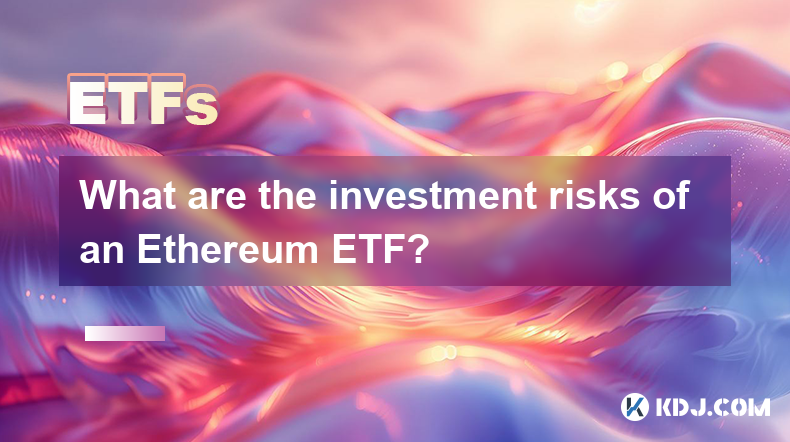
What are the investment risks of an Ethereum ETF?
Mar 18,2025 at 02:12am
Key Points:Price Volatility: Ethereum's price is highly volatile, impacting ETF share prices.Regulatory Uncertainty: Changes in regulatory landscapes can significantly affect ETF trading and performance.Market Manipulation: The potential for market manipulation, particularly in smaller ETFs, exists.Underlying Asset Risk: Risks associated with the Ethere...

What is the long-term investment prospect of an Ethereum ETF?
Mar 18,2025 at 03:01pm
Key Points:Uncertainty surrounds the long-term prospects of an Ethereum ETF due to regulatory hurdles and market volatility.Approval hinges on regulatory clarity regarding cryptocurrencies, especially concerning investor protection and market manipulation.Successful ETF launches could boost Ethereum's price and adoption, but failure could negatively imp...

What are the channels for purchasing an Ethereum ETF?
Mar 18,2025 at 01:49am
Key Points:Currently, there are no Ethereum ETFs available for direct purchase by the general public in most major markets.Access to Ethereum exposure through ETFs is limited, mainly through futures-based ETFs.Purchasing Ethereum directly or through other investment vehicles remains a viable alternative.Regulatory hurdles and market complexities signifi...

Who are the issuers of an Ethereum ETF?
Mar 19,2025 at 08:07pm
Key Points:There are no currently approved Ethereum ETFs in the US, meaning no single issuer can be definitively named. However, several firms have filed applications.The issuers of potential Ethereum ETFs will be large, established financial institutions, typically asset management companies.The specific requirements for ETF issuers are stringent and o...

How is an Ethereum ETF different from a Bitcoin ETF?
Mar 17,2025 at 10:55am
Key Points:Underlying Asset: The core difference lies in the underlying asset: an Ethereum ETF tracks the price of Ether (ETH), while a Bitcoin ETF tracks the price of Bitcoin (BTC).Technology and Use Cases: Ethereum's blockchain supports smart contracts and decentralized applications (dApps), creating a distinct technological and investment narrative c...

Which investors are suitable for an Ethereum ETF?
Mar 16,2025 at 05:50pm
Key Points:Risk Tolerance: Ethereum ETF investment requires a high risk tolerance due to the volatility of the cryptocurrency market.Investment Goals: Investors seeking long-term growth potential and exposure to the Ethereum ecosystem are suitable candidates.Investment Horizon: A longer-term investment horizon is crucial to weather market fluctuations.U...

What are the investment risks of an Ethereum ETF?
Mar 18,2025 at 02:12am
Key Points:Price Volatility: Ethereum's price is highly volatile, impacting ETF share prices.Regulatory Uncertainty: Changes in regulatory landscapes can significantly affect ETF trading and performance.Market Manipulation: The potential for market manipulation, particularly in smaller ETFs, exists.Underlying Asset Risk: Risks associated with the Ethere...
See all articles























































































